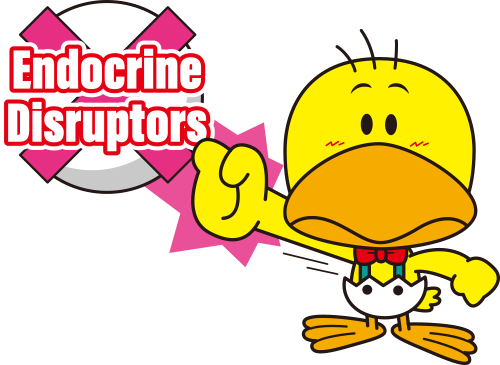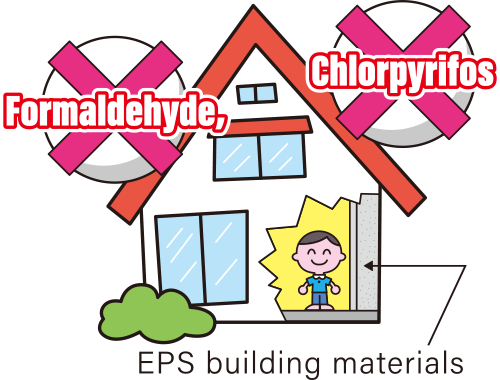Safety and Hygiene
EPS Leaves Little Environmental Footprint and has No Negative Effect on Health
EPS Does Not Contain Any Endocrine Disruptors

Styrene dimers and trimers were listed as endocrine disruptor suspected substances in 1998. However, they were confirmed to have “no negative effect on health” after confirming results of elution tests at research institutions. Also, the Ministry of Health, Labor, and Welfare, Ministry of Agriculture, Forestry and Fisheries, Ministry of Economy, Trade and Industry, and Ministry of the Environment have confirmed to have “no problems”. Styrene dimers and trimers were removed from a list called “SPEED ’98”, which was enacted by Ministry of the Environment in Oct. 2000.
SPEED’98: Strategic Programs on Environmental Endocrine Disruptors ‘98
- What are dimers and trimers? : When there is one styrene molecule, it is called monomer, when two, it is dimer, and when three, it is called trimer.
- Endocrine disruptors are often called “environmental hormones” in Japan. It causes hormones changes in the body or disrupts hormone functions. Effects on reproductive function, etc.…
Revisions to the Food Sanitation Act (enforced in June 2020)
For securing the safety of plastic food containers, our industry has traditionally set strict restrictions on raw materials by following voluntary standards (in accordance with PL standards). As the Food Sanitation Act came into effect, standards now follow the Positive List system which was enacted by the Japanese government (PL Standards applicable to all plastics).

Considering the Impact of Sick House Syndrome
Substances that are restricted in the Building Standards Law, such as formaldehyde and chlorpyrifos, are not used.
*Possible small residual amounts of styrene, toluene, xylene, and ethylbenzene could be present due to the manufacturing process.
Combustion and Incineration
EPS mainly consists of carbon and hydrogen. Under complete combustion, it becomes carbon dioxide (CO2) and water (H2O) without generating dioxin. Like other materials, when under incomplete combustion, it generates soot and carbon monoxide. When disposed at home please follow the directed community disposal rules.
Freon is not used as a Foaming Agent
EPS is manufactured by foaming, so it contains foaming agents (hydrocarbons) such as butane and pentane. Freon (fluorocarbon), which has a severe effect on the ozone layer, is not used in any process from manufacturing the material to the final product. There is no history of using Freon in the production of EPS.